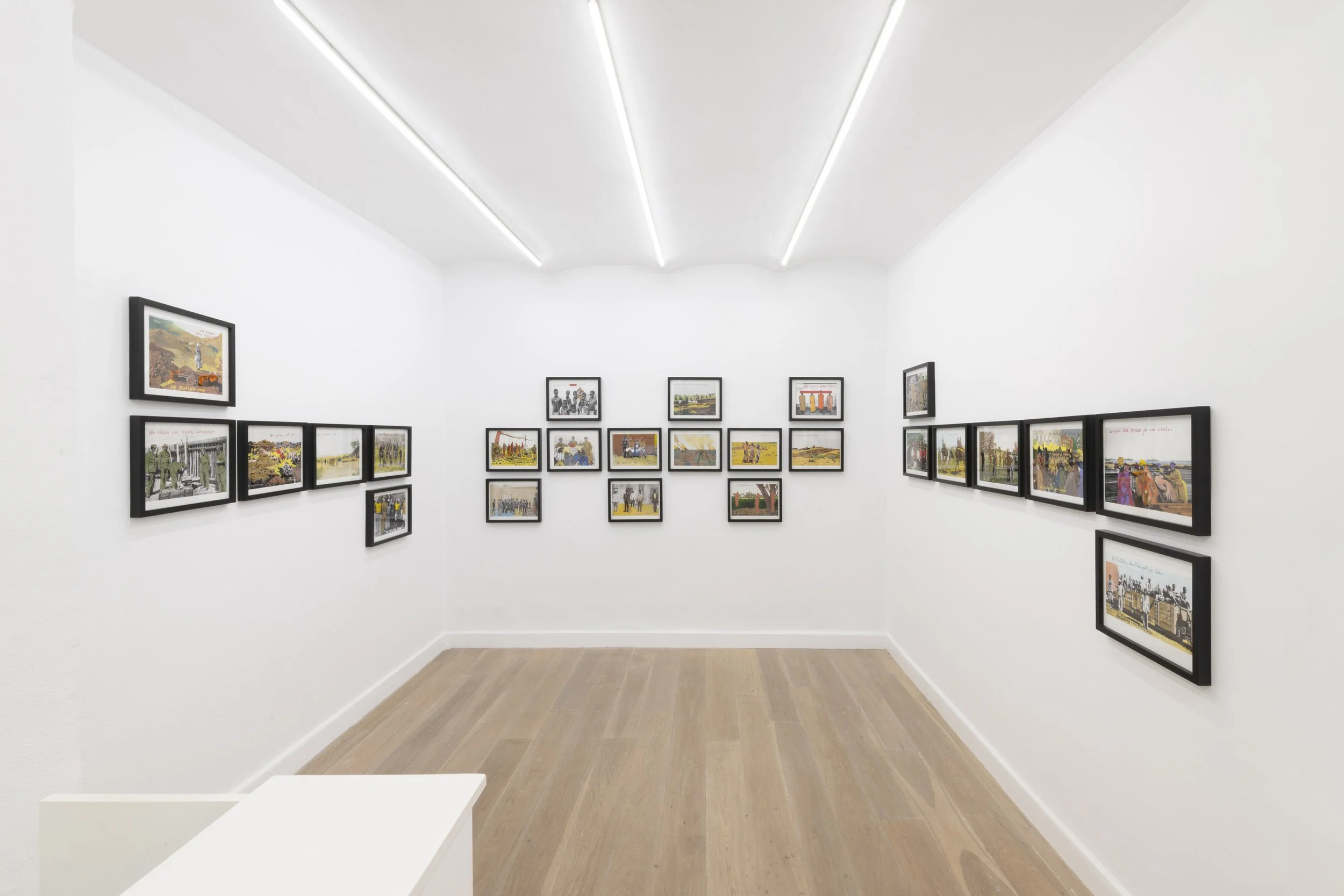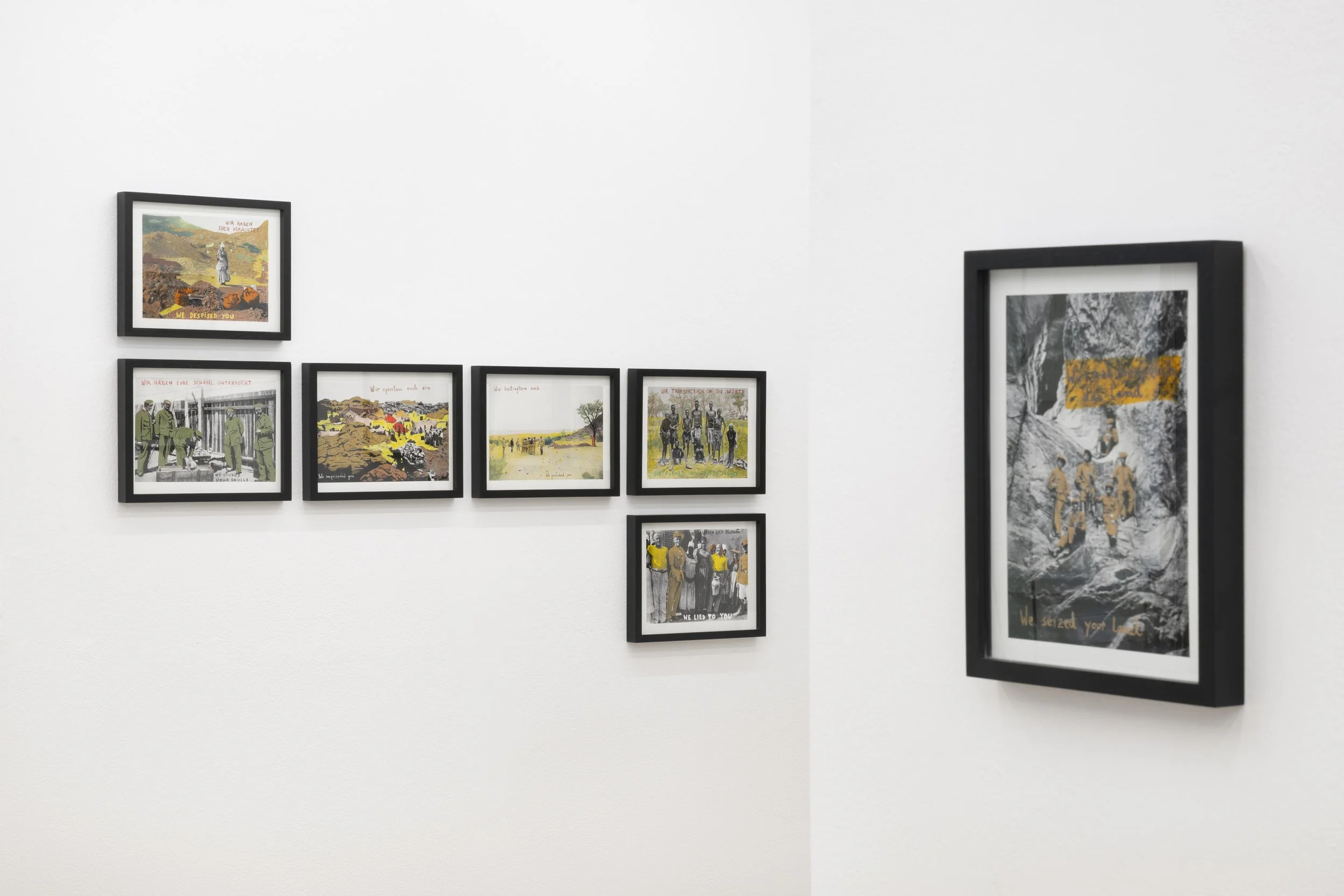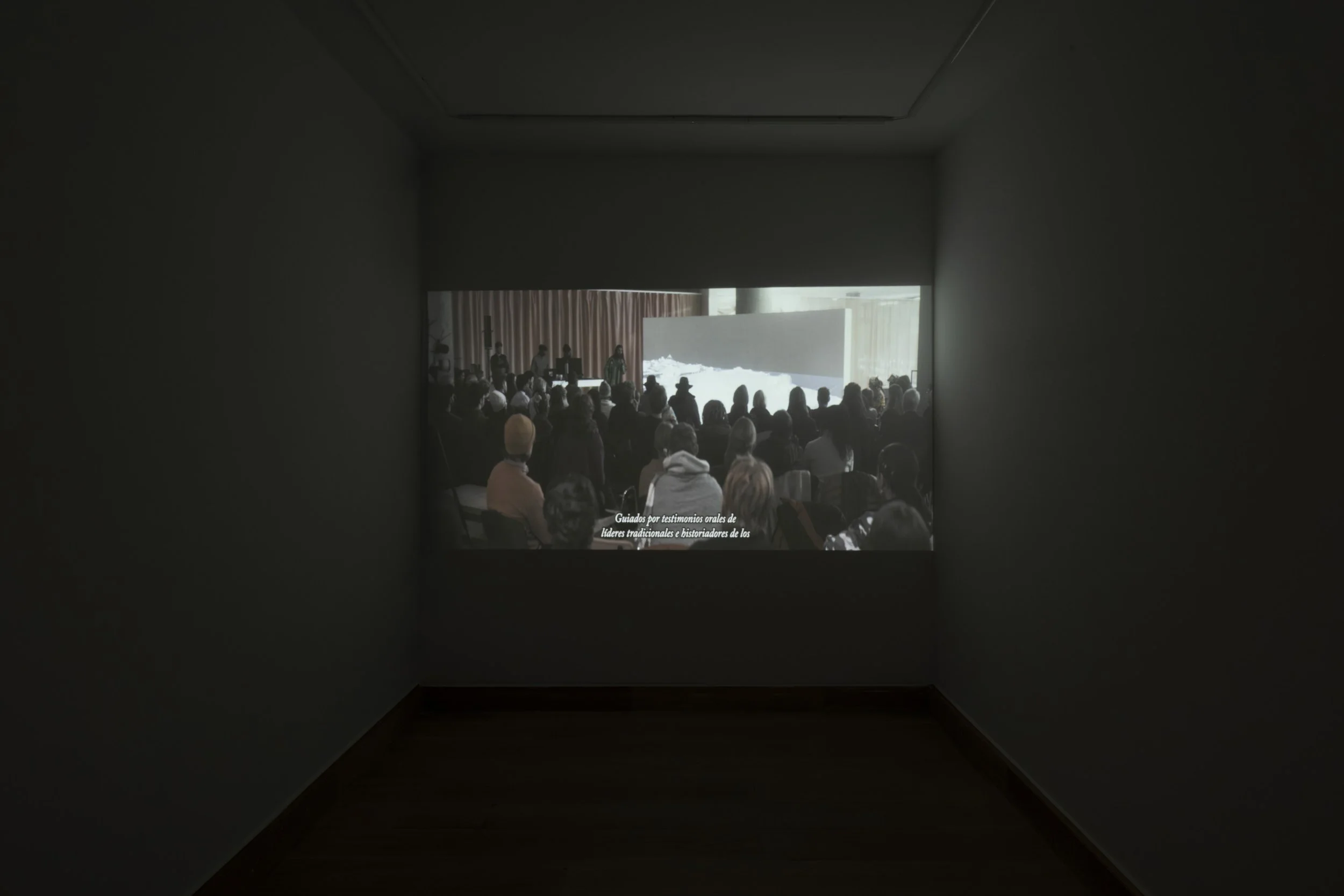Zielinsky presents for Barcelona Gallery Weekend the exhibition Traces of Violence by Marcelo Brodsky. This show, accompanied by a text by Victoria Sacco, brings together the artist’s most recent work, composed of a series of historical photographs taken in the early 20th century that document the genocide that took place in Namibia, when it was still a German colony in Africa. From these documents, Brodsky creates a series of appropriations and insertions that invite reflection on the violent colonial past.
As in his previous works, the artist enlarges the images and intervenes by hand with crayon and watercolor, also adding short phrases that give voice to victims or witnesses. However, in this particular series, the voice and perspective are those of the colonizers: “We enslaved your children”. There is a sense of discomfort in the face of images that depict violence explicitly. Brodsky not only presents the works as visual documents but turns them into vehicles of memory.
Alongside the 30 photographs from the Traces of Violence series, the work Shark Island is presented, based on a research project conducted by Forensic Architecture, Forensis, the Nama Traditional Leaders Association, and the Ovaherero Traditional Authority, titled "German Colonial Genocide in Namibia: Shark Island". The research video will be shown together with Brodsky’s new work.
Since 2022, Forensic Architecture has been working with Nama and Ovaherero leaders in Namibia to investigate sites linked to the genocide carried out between 1904 and 1908 by the German colonial army. At the heart of the investigation is Shark Island, the deadliest concentration camp established in what was then German South West Africa. Together with descendants of victims and survivors, the team reconstructed the camp in great detail and identified burial sites from the time of the genocide. Calls to preserve the island and to remember the horrors that occurred there have become increasingly urgent in the face of commercial and infrastructure projects that threaten to erase the last physical traces of this violent history.
____________
Traces of Violence
Marcelo Brodsky, by Victoria Sacco
Marcelo Brodsky is an artist and human rights activist. He went into exile in Barcelona following the Argentine military coup of 1976. There, he studied Economics at the Universitat de Barcelona and photography with Manel Esclusa at the Centro Internacional de Fotografía. He is a member of the Buena Memoria Association and serves on the Board of Directors of the Memory Park in Buenos Aires, a space dedicated to the victims of state terrorism.
His artistic practice revolves around memory and human rights, topics he began exploring in Argentina and has, over the years, extended to other contexts affected by political violence. One of his foundational projects is Buena memoria (1996), where he investigates the consequences of the Argentine dictatorship on his classmates from the National College of Buenos Aires. Using a group photo taken in 1967, he indicates the fate of each individual—many of whom disappeared—and portrays them in the present day, combining images, videos, and texts that reconstruct the experience of a generation marked by state violence. This work initiated his characteristic visual language, based on intervening archival photographs with handwritten inscriptions and color. The same procedure reappears in another emblematic series, 1968. El fuego de las ideas, which gathers images of protests from the 1960s in different parts of the world. These mobilizations connect with other struggles of the era—such as anti-colonialism, feminism, and the civil rights movement—and serve as an invitation to recover the collective spirit of struggle and resistance in a political present seemingly intent on breaking bonds of solidarity and collectivism.
In this genealogy is Traces of Violence, his most recent series, which addresses through thirty archival photographs the genocide perpetrated by the German Empire against the Herero and Nama peoples at the beginning of the 20th century in Namibia. The images in the series come from colonial archives located by the artist in South Africa, Namibia, Switzerland, Germany, and the United States, many of them unpublished and belonging to old personal albums of soldiers from the German Empire.
The exhibition presents for the first time Shark Island (2024), a work in collaboration with Forensic Architecture, an agency based at Goldsmiths University of London dedicated to investigating violence committed by states and corporations. Since 2022, this team has worked with representatives of the Nama and Herero communities in Namibia to study sites associated with the Herero and Nama genocide. Their inquiry focused on Shark Island, where one of the concentration camps of the former so-called "German South West Africa" operated, allowing the reconstruction of its layout and identification of locations linked to victim burials. Based on this research, Brodsky selected a historical photograph of the site and incorporated visual and textual fragments of the forensic investigation onto it, transforming it into the centerpiece of Traces of Violence.
Aware of the dilemmas involved in addressing a genocide from outside the community that suffered it, Brodsky situates this project in continuity with his own history marked by state violence. Brother of Fernando Brodsky, who disappeared during the last Argentine military dictatorship, and co-founder of the Memory Park in Buenos Aires, he states that his circumstances have allowed him to establish a dialogue of respect and equality with Herero and Nama representatives. Thus, we can approach Traces of Violence as a "South-South" work, created by a Global South artist about an episode that also occurred in the South. In this sense, Traces of Violence is, without a doubt, an act of solidarity memory.
____________
About the artist:
Artist and human rights activist Marcelo Brodsky (1954 - Buenos Aires) was forced into exile in Barcelona following the military coup of 1976. There he studied economics at the Universitat de Barcelona and photography with Manel Esclusa at the Centro Internacional de la Fotografía. The artist is an active member of the human rights organization “Asociación Buena Memoria” and of the Board of Directors of the Parque de la Memoria in Buenos Aires, dedicated to the victims of state terrorism. His works have been exhibited in institutions such as: Metropolitan Museum of Art in New York, Museum of Fine Arts in Houston, National Museum of Fine Arts in Buenos Aires, Pinacoteca de Sao Paulo, Fondation Cartier pour l’art contemporain in Paris, Museo de la Solidaridad Salvador Allende, La Virreina Centre de la Imatge, National Museum of Civil Rights in Memphis, and the Centro de Arte Dos de Mayo, among many others.






















































